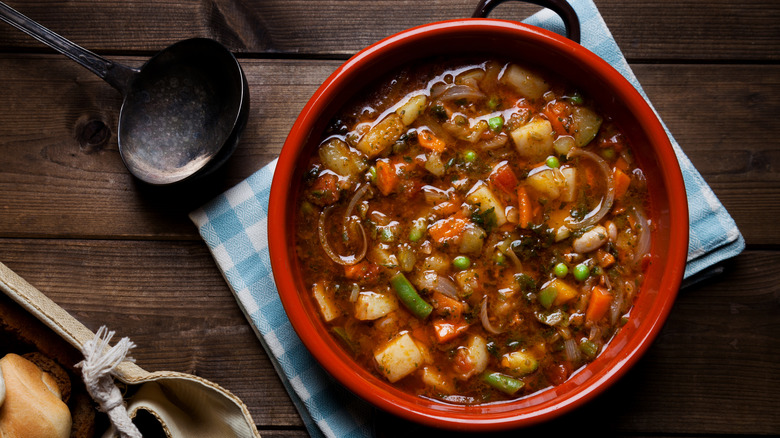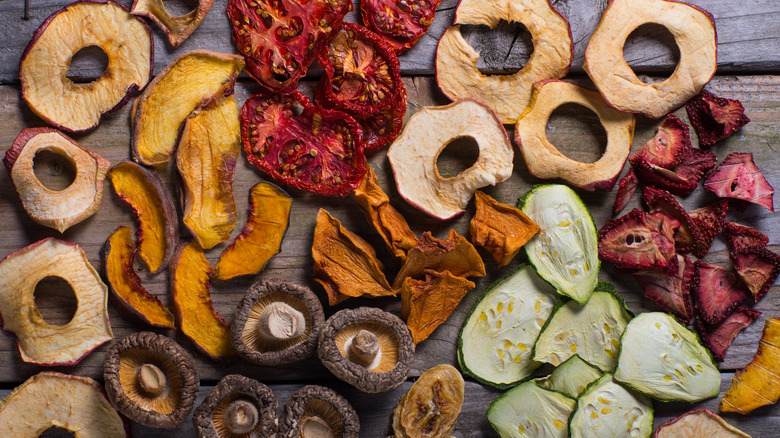It's Time To Start Using Dried Vegetables In Your Soup
If you think dried vegetables and fruits are less tasty and nutritious than fresh-picked versions, you're not alone. Viewing sealed bags of shriveled produce in a supermarket is unquestionably less appealing than bins overflowing with brilliantly hued squashes, snap peas, peppers, tomatoes, carrots, sweet potatoes, and zucchinis. But get ready for a new mindset: Those field-fresh beauties, which typically lose luster in a matter of hours or days, can live gracefully in your pantry or fridge for months after being dehydrated — with little or no deterioration in quality, flavor, and nutritional benefits.
That's why it's time to start using dried vegetables in your soups. With proper dehydrating techniques and careful timing, those summer and autumn vegetables can provide fresh-tasting, nutritious soups well into the winter. The key is drying them as soon as possible after harvesting and arrival in your kitchen. Dehydrating at peak quality, before degradation begins, preserves ultimate flavor as well as many of the vitamins, nutrients, and antioxidants packed inside. When autumn and winter chills arrives, and soup bowls emerge from cupboards, you'll be ready.
Rehydrating dried vegetables restores their plumpness, including shape and size, bringing all that goodness and visual appeal directly into your soups. It's possible to rehydrate them separately in cold or hot water, but that's unnecessary when using them in your favorite soup recipes. The boiling water or broth returns veggies to their glory days, while also killing bacteria that may have lingered on produce surfaces before dehydration.
Dehydrating and using dried vegetables.
It's definitely possible to buy dried vegetables in supermarkets and health-centric grocery venues. But you'll need to read labels, keeping an eye out for added sugars, salt, additives, or unwanted oils. A simple bypass for all that is to dehydrate vegetables yourself, while saving some money to boot. You can create a mother-lode stash of soup ingredients, including dried vegetables, herbs, and beans, all sealed in handy portion- or pot-sized bags, ready to go in an instant.
For streamlined convenience and precision, a plethora of dehydration machines exist, ranging from simple affordable ones to complex pro-level food dehydrators with multiple settings and stainless steel pull-out shelves. Regardless of style and functionality features, expect several hours to dry a batch of cut vegetables. Its also possible to dehydrate vegetables in an oven set at 140 degrees Fahrenheit, though it's likely to take longer. After all is said and done, the resulting dehydrated goodies save loads of prep time when making soups and stews in the coming months.
Think ahead and store soup-friendly dried ingredients together in ready-to-go soup pouches, including veggies, beans, noodles, and dried seasonings or herbs. It's also possible to season the veggies before dehydrating, allowing the flavors to permeate each individual piece. Consider layering the final dried ingredients in see-through jars or clear, cone-shaped frosting bags for easy identification and visually appealing gift-giving. When time is tight and the day is right, you'll be ladling up hot deliciousness in no time. Soup's on!

